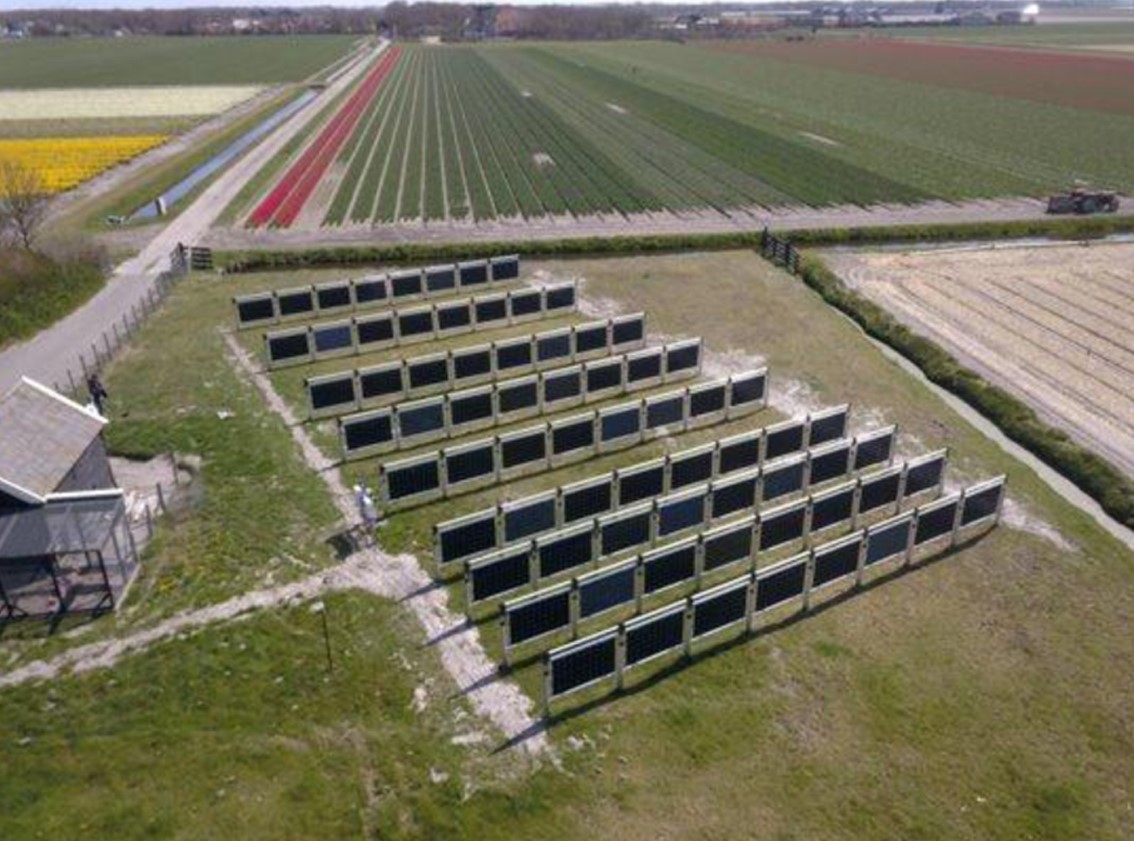A group of researchers at the Netherlands Organisation for Applied Scientific Research (TNO) has conducted a series of tests and simulations to understand why vertical PV systems tend to provide unexpected yield gains compared to horizontal arrays and have found that vertical installations have much lower operating temperatures.
“Although better than expected performance for vertical installation of bifacial PV has been reported at conferences and workshops, we haven’t seen any publications that show that this is accompanied with a much lower operating temperature than you would expect for free-standing fixed tilt PV with the same total irradiance,” the research’s corresponding author, Bas B. Van Aken, told pv magazine. “These lower operating temperatures have a positive effect on the operating voltage. And thereby on the total energy generation, particularly under high irradiance conditions.”
In the study “Thermal model in digital twin of vertical PV system helps to explain unexpected yield gains,” published in EPJ Photovoltaics, Van Aken and his colleagues explained that the voltage is influenced both by the amount of light and by the temperature of the solar cells. With increasing irradiance conditions, the voltage increases logarithmically, while with increasing temperature, the voltage decreases, typically by 0.3-0.4% per C.
“For a standard system, we observed that under high irradiance conditions, the increase due to the light is offset by the decrease due to the higher operating temperature,” Van Aken stressed. “However, for the vertical system, we observed that the operating temperature is not increasing so much and the voltage increase and decrease are more or less balancing.”
For its modeling, the group used digital twins, which are virtual representations that connect and visualize real-world assets, to create twins consisting of a real PV system and a copy in digital format. Digital twins are commonly used for operation and maintenance (O&M) of solar power plants. “The digital version mimics the output of the PV panels based on the time series of weather and other environmental data. The simulated values are compared to observed data,” the scientists explained.
They took their measurements in a vertical PV system located near the TNO facilities in Petten, the Netherlands. The east-west system features nine rows each equipped with eight 315 W bifacial modules, with the spacing between module rows being 2 m, 4 m, or 6 m, respectively. Of the 72 modules deployed in the system, 60 rely on n-type M2 TOPCon solar cells. All of the panels are equipped with power optimizers provided by Israel-based Solaredge.
For its analysis, the group utilized an in-house developed extraction method and found that the heat transfer coefficients of the vertical panels are nearly double the values of the horizontal panels. Heat transfer coefficients define how heat energy passes from one material to another and are commonly used, for example, to make insulation in homes.
They also ascertained that the vertical array operates at a temperature difference with respect to ambient that is “nearly halved,” which they said results in a 2.5% higher annual energy yield.
“These results show the importance of checking the actual operating conditions of emerging applications of solar panels,” Van Aken concluded. “We expect that this effect has a 2-3% increase in annual electricity yield in the Netherlands, the lower operating temperature has a slowing effect on degradation mechanisms and the effect could be more significant in locations with higher irradiance conditions.”
This content is protected by copyright and may not be reused. If you want to cooperate with us and would like to reuse some of our content, please contact: editors@pv-magazine.com.









By submitting this form you agree to pv magazine using your data for the purposes of publishing your comment.
Your personal data will only be disclosed or otherwise transmitted to third parties for the purposes of spam filtering or if this is necessary for technical maintenance of the website. Any other transfer to third parties will not take place unless this is justified on the basis of applicable data protection regulations or if pv magazine is legally obliged to do so.
You may revoke this consent at any time with effect for the future, in which case your personal data will be deleted immediately. Otherwise, your data will be deleted if pv magazine has processed your request or the purpose of data storage is fulfilled.
Further information on data privacy can be found in our Data Protection Policy.